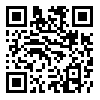Sun, Nov 16, 2025
Volume 9 - Continuous Publishing
Iran J Neurosurg 2023, 9 - Continuous Publishing: 89-98 |
Back to browse issues page
Download citation:
BibTeX | RIS | EndNote | Medlars | ProCite | Reference Manager | RefWorks
Send citation to:



BibTeX | RIS | EndNote | Medlars | ProCite | Reference Manager | RefWorks
Send citation to:
Goswami P, S. Chandran R, Mohammed Haneefa S, Sathyababu A, Bhanu Prabhakar R. Clinical and Radiological Changes at the Adjacent Segments Following Cervical Spine Surgery: A Retrospective Study. Iran J Neurosurg 2023; 9 : 12
URL: http://irjns.org/article-1-349-en.html
URL: http://irjns.org/article-1-349-en.html
Prakash Goswami1 

 , Raj S. Chandran *2
, Raj S. Chandran *2 

 , Sharmad Mohammed Haneefa1
, Sharmad Mohammed Haneefa1 

 , Arun Sathyababu1
, Arun Sathyababu1 

 , Rajmohan Bhanu Prabhakar1
, Rajmohan Bhanu Prabhakar1 




 , Raj S. Chandran *2
, Raj S. Chandran *2 

 , Sharmad Mohammed Haneefa1
, Sharmad Mohammed Haneefa1 

 , Arun Sathyababu1
, Arun Sathyababu1 

 , Rajmohan Bhanu Prabhakar1
, Rajmohan Bhanu Prabhakar1 


1- Department of Neurosurgery, Government Medical College, Thiruvananthapuram, Kerala, India
2- Department of Neurosurgery, Government Medical College, Thiruvananthapuram, Kerala, India ,rajschandran@gmail.com
2- Department of Neurosurgery, Government Medical College, Thiruvananthapuram, Kerala, India ,
Abstract: (2738 Views)
Background and Aim: Adjacent segment disease (ASD), radiological and clinical, is observed in many of the patients who undergo cervical inter-body fusion with/without graft, and with/without plating. This study aims to evaluate the proportion of ASD among patients who underwent cervical spine fusion surgery, to study the severity of degenerative radiographic findings at adjacent levels, and to determine sites and patterns of ASD.
Methods and Materials/Patients: A descriptive study was performed on patients who underwent a previous cervical arthrodesis procedure in the last 2-5 years and continued follow-up as neurosurgery outpatients. A total of 59 patients who qualified for the inclusion criteria were included in the study.
Results: Spine fixation was commonly performed at a single level mostly with sample size (54.2%, n=32) then at two levels (42.4%, n=25) and three levels (3.4%, n=2). Adjacent segment degeneration was present in the spine fixation level subgroup at a single level of 9 cases (28.12%), two levels of 9 cases (36%), and three-level fixations of 2 cases (100%). Six patients (10.2%) out of 59 patients developed radiculopathy. Among twenty-two cases (37.3%) with new changes at adjacent levels, reduced disc height was the most common one (18.6%, n=11). Anterior and posterior osteophytes with reduced disc height were found in 2 cases. Therefore, actual new changes were present in 20 cases only. The most common level of C4-C5 was observed for the development of ASD (13.6%, n=8). ASD developed at cranial to fusion in 13 cases (22%), caudal to fusion in 5 cases (8.5%), and at both levels in 2 patients.
Conclusion: Adjacent segment disease was observed in a significant number of patients who underwent cervical spine surgery as evident from the results but only 6 out of 20 cases with radiological evidence of ASD were symptomatic. Changes were observed commonly at the C4/C5 level.
Methods and Materials/Patients: A descriptive study was performed on patients who underwent a previous cervical arthrodesis procedure in the last 2-5 years and continued follow-up as neurosurgery outpatients. A total of 59 patients who qualified for the inclusion criteria were included in the study.
Results: Spine fixation was commonly performed at a single level mostly with sample size (54.2%, n=32) then at two levels (42.4%, n=25) and three levels (3.4%, n=2). Adjacent segment degeneration was present in the spine fixation level subgroup at a single level of 9 cases (28.12%), two levels of 9 cases (36%), and three-level fixations of 2 cases (100%). Six patients (10.2%) out of 59 patients developed radiculopathy. Among twenty-two cases (37.3%) with new changes at adjacent levels, reduced disc height was the most common one (18.6%, n=11). Anterior and posterior osteophytes with reduced disc height were found in 2 cases. Therefore, actual new changes were present in 20 cases only. The most common level of C4-C5 was observed for the development of ASD (13.6%, n=8). ASD developed at cranial to fusion in 13 cases (22%), caudal to fusion in 5 cases (8.5%), and at both levels in 2 patients.
Conclusion: Adjacent segment disease was observed in a significant number of patients who underwent cervical spine surgery as evident from the results but only 6 out of 20 cases with radiological evidence of ASD were symptomatic. Changes were observed commonly at the C4/C5 level.
Article number: 12
Send email to the article author
| Rights and Permissions | |
 |
This work is licensed under a Creative Commons Attribution-NonCommercial 4.0 International License. |



